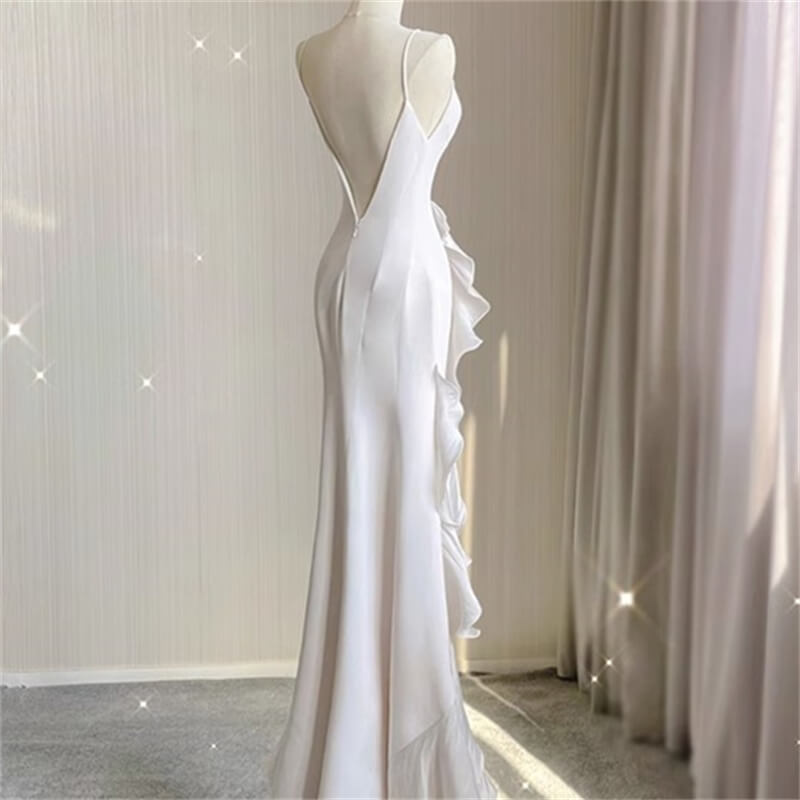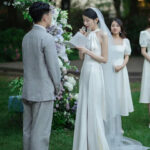Beautiful Plants For Your Interior

Table of Contents
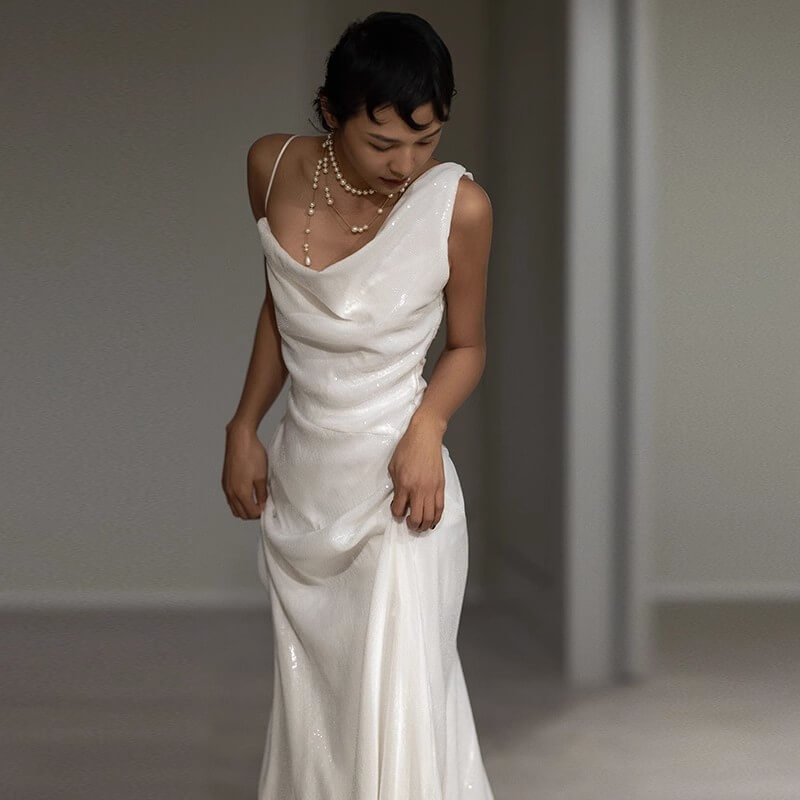
Introduction
The journey to the altar is paved with myriad decisions, each holding its significance in the tapestry of a wedding. Among these, the choice of the wedding dress stands as a hallmark of personal expression and tradition, embodying the bride’s identity and the essence of the celebration. This choice, wrapped in layers of tulle, lace, and emotion, is not just about selecting a garment—it’s about discovering a symbol of love, commitment, and the individuality of the bride as she embarks on a new chapter in her life.
For many brides, the search for the perfect wedding dress is a cherished part of the wedding planning process, filled with excitement, expectation, and sometimes, a bit of anxiety. The question of “When should I start trying on wedding dresses?” is more than a query about scheduling—it’s a reflection of the anticipation and the desire to make every detail of the wedding day as perfect and as personal as possible. This article is designed to guide you through this significant journey, offering advice and insights on the ideal timeline for trying on wedding dresses, key factors to consider, and tips to ensure that your dress-shopping experience is as beautiful and memorable as the dress itself.
We understand that the process of choosing a wedding dress is unique for every bride. It’s a journey that intertwines personal style, cultural traditions, and the practicalities of planning a wedding. This guide aims to provide a comprehensive roadmap, balancing the practicalities of timelines and appointments with the emotional aspects of finding a dress that speaks to your heart. Whether you envision a grand, traditional wedding or a more intimate and unconventional celebration, your dress is a reflection of your personality and your dreams for the big day.
In this exploration, we will delve into the optimal time to start your search, considering factors like dress availability, alteration timelines, and seasonal styles. We will also touch upon the importance of aligning your dress choice with the overall theme and location of your wedding, ensuring that your attire complements the ambiance and feel of your special day. From setting a budget to choosing the right entourage for your dress shopping, we aim to cover every aspect that contributes to making an informed and heartfelt decision.
So, as you step into the world of silks and satins, beading and lace, let this article be your guide. We invite you to embark on this journey with a sense of adventure, confidence, and the joy of anticipation. The path to finding your dream wedding dress starts here, in these pages, where we unravel the timelines, demystify the process, and celebrate the beauty of finding the perfect dress for your once-in-a-lifetime day.
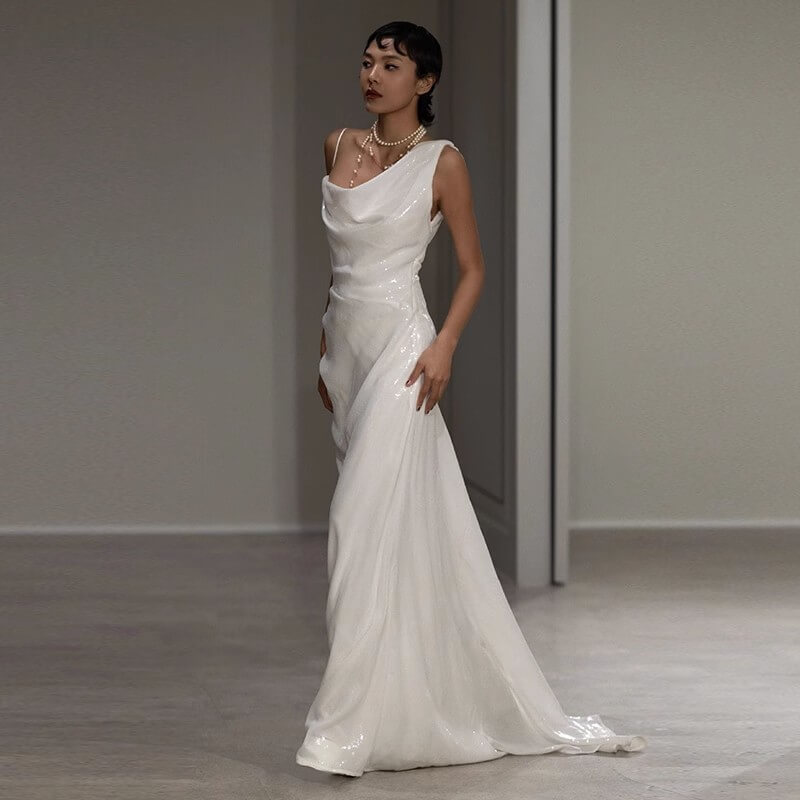
Part 1: Understanding the Wedding Dress Timeline
The journey to finding your perfect wedding dress is much like a well-orchestrated symphony – it requires timing, patience, and attention to detail. Understanding the timeline for choosing your wedding dress is crucial in making the process enjoyable and stress-free. Here we break down the timeline to guide you through each stage.
- Early Considerations (12-18 Months Before the Wedding)
- Inspiration and Research: This is the time for dreaming and gathering ideas. Dive into bridal magazines, scour Pinterest, and follow wedding dress designers and bridal boutiques on social media. Pay attention to the styles that repeatedly catch your eye. Are you drawn to classic, bohemian, modern, or vintage styles? This is also the time to explore different fabrics, cuts, and silhouettes to understand what might suit you best.
- Setting a Budget: One of the first and most crucial steps is to set a realistic budget for your dress. Remember, the cost of the dress often does not include alterations, accessories, or undergarments. Setting a clear budget now will guide your choices and help avoid heartache later.
- Consider the Wedding Theme and Venue: The style of your wedding dress should complement the overall theme and setting of your wedding. A grand ballroom event might call for a different style than a rustic outdoor wedding. Also, think about comfort and practicality – for example, a lighter fabric for a summer wedding or a design that allows for easy movement.
- The Ideal Time to Start Shopping (9-12 Months Before)
- Why Start This Early? Beginning your search 9-12 months in advance gives you plenty of time to explore different boutiques, try on various styles, and avoid the stress of rush decisions or orders. This period is also crucial for custom-made dresses, which can take several months to create.
- Booking Appointments: Popular bridal boutiques can have long waiting lists for appointments. Starting early allows you to schedule these appointments at your convenience, ensuring you have the opportunity to visit your top choices.
- Making the Final Decision (6-9 Months Before)
- Choosing Your Dress: By this time, aim to have made your final decision. This allows for any delays in dress arrival and necessary alterations. Remember, it’s not just about finding a dress you love but also ensuring it fits you perfectly.
- Custom and Designer Dresses: If you’re opting for a custom dress or a gown from a high-end designer, keep in mind that these can take longer to be made and delivered. Starting early is crucial in these cases.
- Alterations and Final Fittings (3-2 Months Before)
- First Fitting: Schedule your first fitting approximately three months before your wedding. This is when major alterations are made, such as adjusting the hem, bust, waist, and other areas.
- Second Fitting: Around one to two months before your wedding, you’ll have your second fitting. Here, minor adjustments are made following the initial alterations.
- Final Fitting: Schedule your final fitting as close to the wedding date as possible, ideally a few weeks before. This is to ensure the dress fits perfectly, considering any slight body changes.
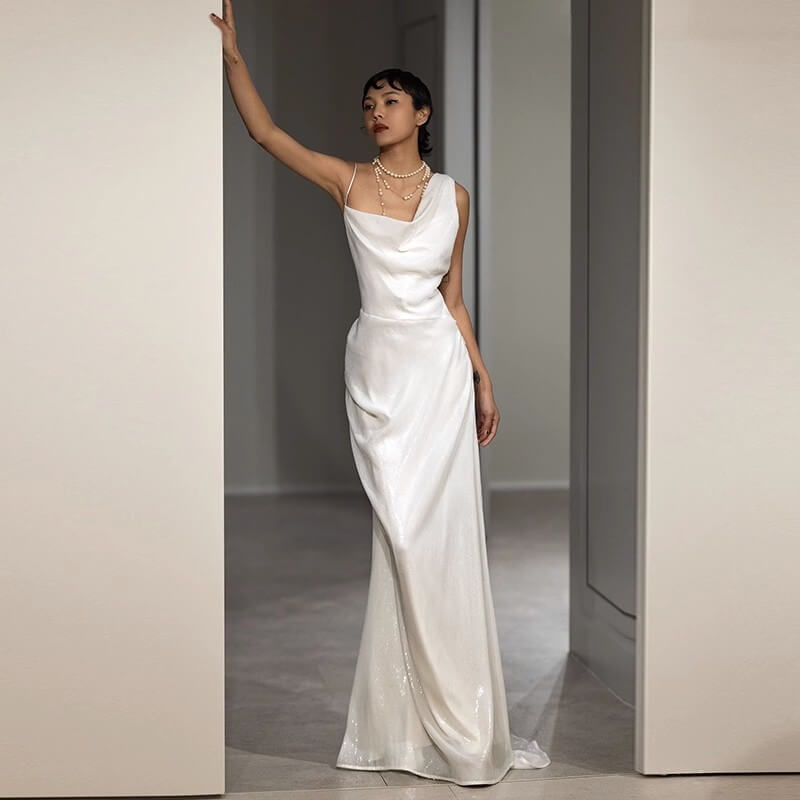
Additional Considerations
- Plan for Unexpected Delays: It’s wise to factor in some buffer time for unexpected delays, especially if you’re ordering a dress from overseas or during peak wedding season.
- Consider the Time for Accessory Shopping: Don’t forget to allocate time to choose your accessories, such as shoes, veil, and jewelry, which are essential to complete your bridal look.
- Flexibility: Keep an open mind throughout the process. Your preferences might evolve as you try on different styles, and being flexible can lead to finding a dress that’s even better than what you initially imagined.
By following this timeline, you can ensure that your journey to finding the perfect wedding dress is as smooth and enjoyable as possible. Remember, this process is not just about finding a dress – it’s about preparing for one of the most memorable days of your life. So, take your time, savor each moment, and look forward to the day when you step out in the dress that was meant just for you.
Part 2: Factors to Consider in Your Wedding Dress Search
Embarking on the search for the perfect wedding dress is not just about setting dates and scheduling appointments. It’s a journey that intertwines with personal preferences, the nature of the wedding, and even practical considerations. Below are key factors every bride should consider to ensure the dress not only looks stunning but also resonates with her individuality and the essence of the wedding day.
- Season and Climate Considerations:
- Weather-Appropriate Choices: The season in which your wedding will take place significantly influences your dress choice. A heavy satin gown might be majestic for a winter wedding but can be uncomfortable for a summer beach ceremony. Conversely, a light chiffon dress perfect for a summer affair may not be suitable for a snowy outdoor event.
- Fabric and Comfort: Fabrics like organza and chiffon are ideal for warmer climates, while velvet and heavy satin suit cooler conditions. Remember, comfort is key; you want to feel as good as you look.
- Wedding Theme and Venue:
- Harmonizing with the Setting: Your dress should complement the venue and theme of your wedding. A grand ballroom might call for a more formal, elaborate gown, while a garden setting lends itself to a lighter, more whimsical style.
- Venue Practicalities: Consider the practical aspects of the venue. For instance, a dress with a long train might be challenging to manage on a beach or in a rustic barn setting.
- Personal Style and Body Shape:
- Reflecting Your Style: Your wedding dress should be an extension of your style. If you’re more comfortable in simplistic designs, a heavily embellished ball gown might not reflect who you are.
- Flattering Your Body Shape: Understanding your body shape is crucial. A-line dresses are universally flattering, mermaid styles accentuate curves, and empire lines are great for a more bohemian look.
- Budget Considerations:
- Setting a Realistic Budget: Be realistic about what you can afford and remember to include alteration costs, accessories, and any potential shipping fees in your budget.
- Hidden Costs: Often, the price of the dress is just the beginning. Alterations can be costly, and additional elements like veils, shoes, and jewelry can add up.
- Long-Term Comfort and Wearability:
- Comfort Throughout the Day: You will be wearing your dress for many hours. Consider how comfortable it will be to sit, dance, and move around in your chosen gown.
- Changing for the Reception: Some brides choose a second, more comfortable dress for the reception. Consider whether this is an option you’d like to explore.
- Cultural and Family Traditions:
- Honoring Heritage: For many, incorporating elements of their cultural background into their wedding dress is essential. This could mean specific colors, patterns, or styles.
- Family Heirlooms: Incorporating a piece of family history, like a veil or a piece of jewelry, can add sentimental value to your attire.
- Current Trends vs. Timeless Styles:
- Trendy vs. Timeless: While it’s great to be aware of current trends, consider how they will look in your wedding photos in 20 or 30 years. Opting for a more classic style can ensure your photos remain timeless.
- Your Future Self: Imagine looking back at your wedding photos years from now. Choose a dress that you believe will resonate with your future self.
- The Shopping Experience:
- Where to Shop: From boutique bridal shops to large retail stores and online options, there are numerous places to find your dress. Each offers a different experience and range of options.
- Consulting with Professionals: Bridal consultants can offer valuable advice. They understand body shapes, styles, and the latest trends and can help guide you to your perfect dress.
In conclusion, choosing your wedding dress is a deeply personal and significant decision. It’s a balance between practicality, style, comfort, and expressing your individuality. By considering these factors, you can ensure that your dress not only looks beautiful but also feels right, fitting seamlessly into the magical tapestry of your wedding day. Remember, the most important thing is how you feel in the dress. It should reflect the best, most beautiful version of you.
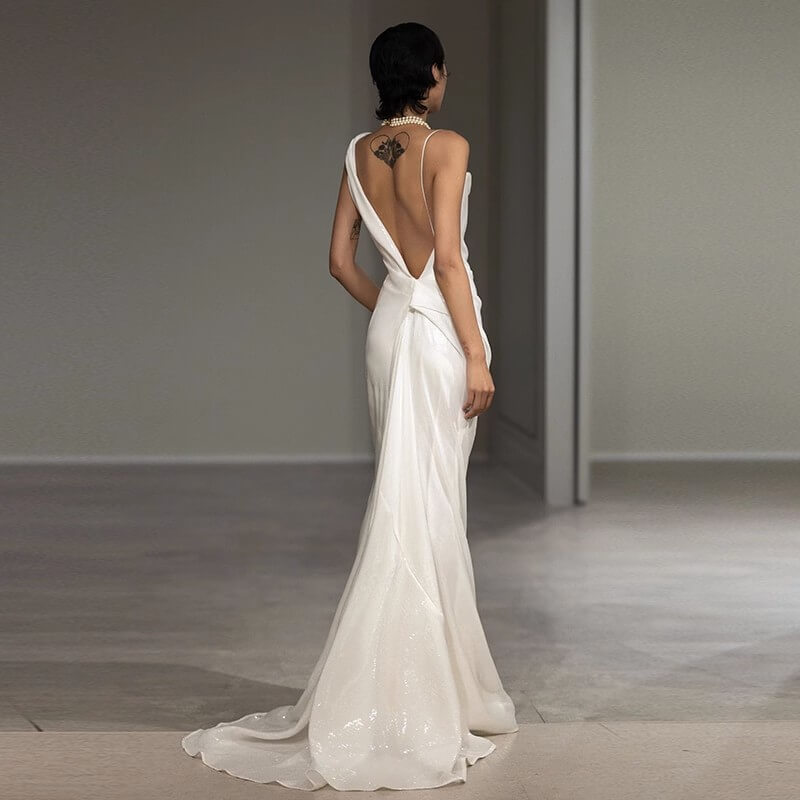
Part 3: Tips for a Successful Dress Shopping Experience
- What to Wear: Choose undergarments similar to what you will wear on your wedding day. This helps in getting a better idea of how the dress will fit.
- Accessories Matter: Bring along any accessories you plan to wear. This includes jewelry, veils, and shoes.
- Documenting the Process: Take photos of each dress. This can help you compare and make a decision later.
- Choosing Your Entourage Wisely: Bring a few people whose opinions you value and trust. Too many opinions can be overwhelming.
- Open-mindedness: Be willing to try on different styles. Dresses often look different on the body than on the hanger.
Part 4: Managing Expectations and Emotions
- The Myth of the Perfect Dress: It’s important to have realistic expectations. Not every bride has a tearful ‘this is the one’ moment, and that’s perfectly okay.
- Stay True to Your Style: The most important thing is that you feel like yourself in your dress.
- Dealing with Pressure: It’s your day and your dress. Trust your instincts over outside opinions.
Crafted with meticulous attention to detail and tailored to perfection, the gown showcases a sleeveless design that exudes sophistication and allows for unrestricted movement and comfort.
Conclusion
As we wrap up our comprehensive guide on when to start trying on wedding dresses and the various factors to consider, it’s important to remember that your wedding dress journey is uniquely yours. It’s a blend of practical planning, personal style, and the magic of finding a garment that speaks to your heart. The process should be enjoyable, a cherished chapter in your wedding story, filled with moments of discovery and delight.
Your wedding dress is more than just fabric and stitches; it’s a symbol of your love story, a representation of your personality, and a cherished memory in the making. As you embark on this journey, keep in mind the importance of starting early, being mindful of your budget, and considering the season, venue, and personal style. Remember, comfort is key – you want to be able to dance, laugh, and celebrate without constraints.
Throughout your search, don’t lose sight of what truly matters – the love and commitment you are celebrating. While trends come and go, and the opinions of others may vary, your feelings about the dress are paramount. Choose a dress that makes you feel confident, beautiful, and authentically you.
Finally, cherish every moment of the journey. From the first trial to the final fitting, each step is a part of your unique bridal story. Embrace the excitement, the anticipation, and even the moments of uncertainty, for they all lead to that magical day when you walk down the aisle in a dress that was made for you in every way.
In conclusion, whether you find your dream dress on the first try or the tenth, the key is to enjoy the journey, trust your instincts, and look forward to the day when you’ll shine in your chosen gown, surrounded by love and joy. Here’s to finding the dress that not only fits your body but also suits your soul – a dress that will be an integral part of your wedding day, remembered and cherished for years to come.
